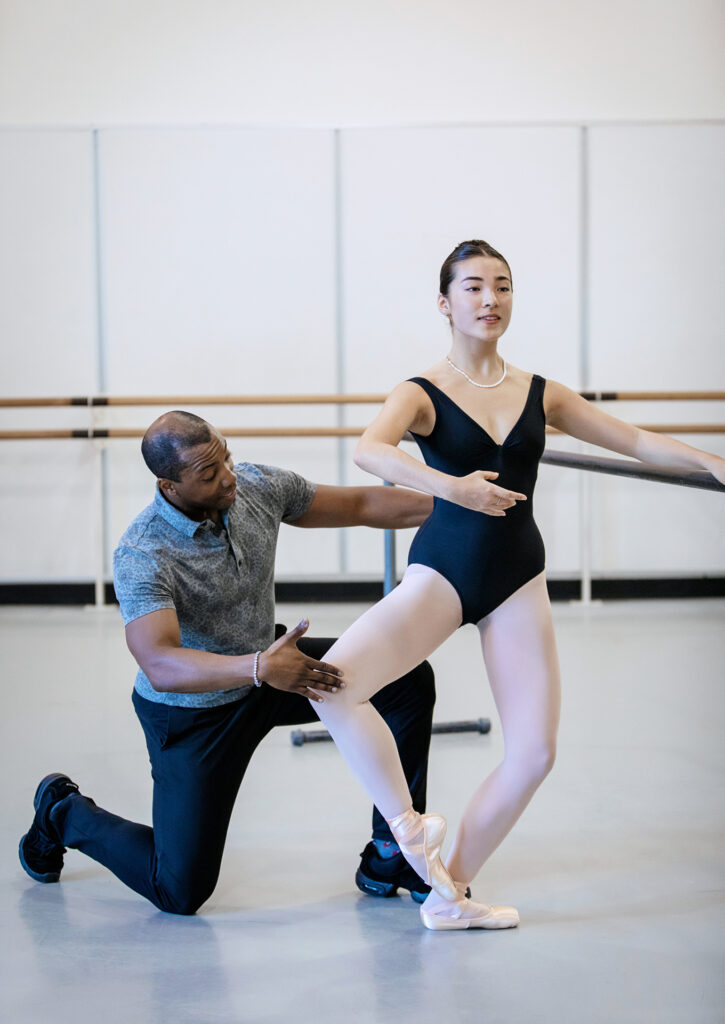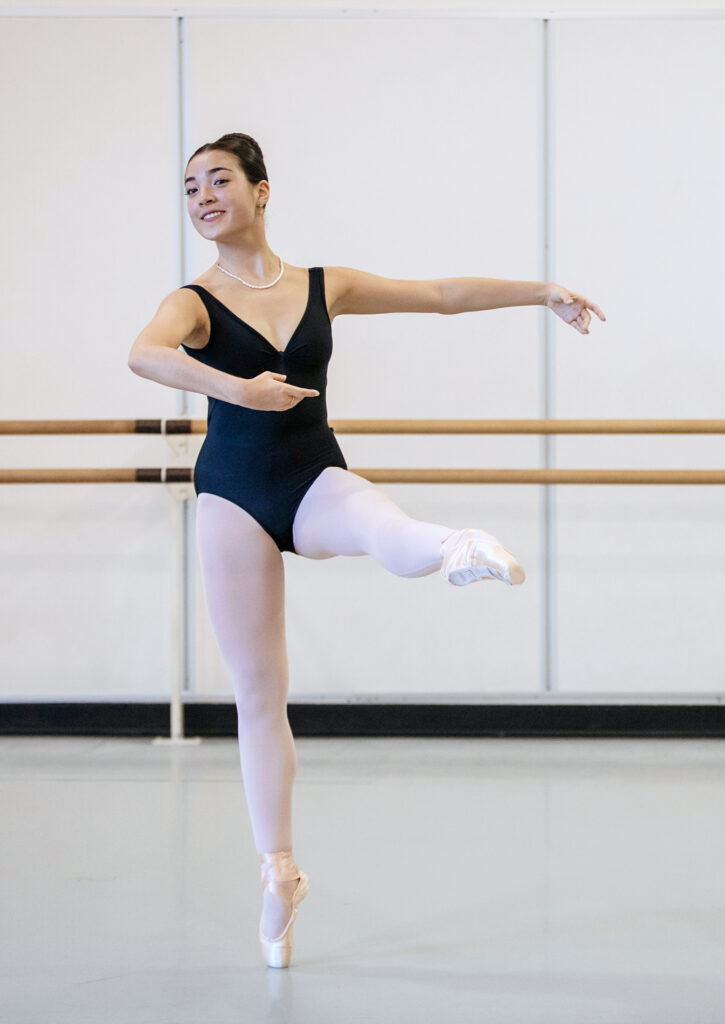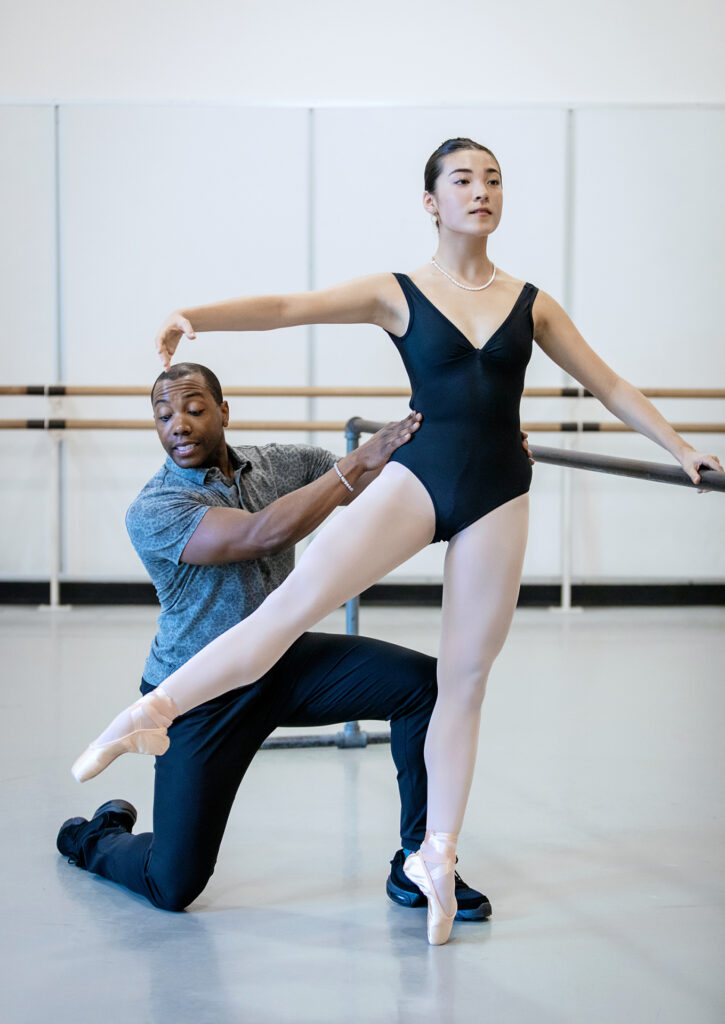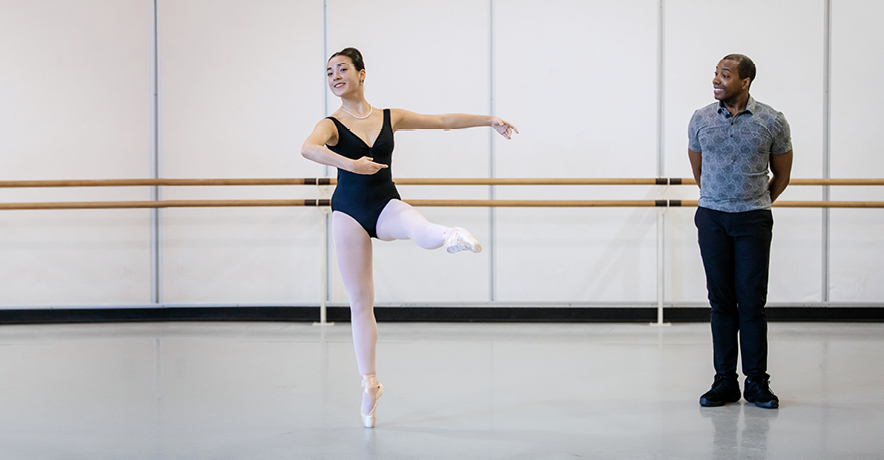Mastering Ballonné With Kiyon Ross
As a soloist with Pacific Northwest Ballet, Kiyon Ross excelled in roles such as Puck in A Midsummer Night’s Dream. His dynamic movements and jumping ability made him a standout with the company. Now, as the newly appointed associate artistic director of PNB, Ross is helping the next generation of dancers find success in ballet. Here, he offers his advice for performing a clean and polished ballonné sauté and ballonné on pointe.
The Components of Ballonné
“I always like to teach students the definition of a term, because I think it helps them understand not only what the step will look like, but also what it should feel like,” Ross explains. “ ‘Pas ballonné’ means ‘bouncing step,’ and it’s actually supposed to be very light and springy.” Ross suggests imagining the action of bouncing a rubber ball, and picturing a lightness in the rhythm of the bounce.
Ross also notes that while ballonné is a jumping step, it is similar to a step at the barre: fondu. Be aware of extending and straightening both legs at the same time as you jump, and then pressing the working knee back and finding a deep plié as you land. “As you’re landing, I’m really looking for that diamond shape in the legs,” he says. “I need to see the external rotation.”

Consider Your Angles and Lines
In class, Ross frequently gives consecutive ballonnés in the effacé position traveling diagonally downstage. “It should look light,” he says. Engage your supporting glute muscles as you land to ensure the movement doesn’t have a sinking feeling.
Effacé can be a difficult position to achieve because “it’s easy to be way too open,” Ross says. “Ballonné has to stay crossed.” You may end up in a splayed position if the extending leg swings out away from the body. “Remember to keep the toes of the leg that’s extending in front of your sternum,” he advises.

More Than a Jump
It is easy to focus only on the legs or the mechanics of how the jump works. “What I’m looking for in an advanced student performing ballonné is not only the legs working, but also the upper body working in concert with the lower body,” Ross says. “Because dancing is an overall picture, not just the legs, the arms, the épaulement—it’s all of that together.”
Ross recommends showing elegant, rounded arms as well as épaulement. “If you’re facing the mirror in effacé, really turn your head towards the mirror and show that right cheek forward,” he says. “It will create a nice shape in the upper body that complements the jump.”
Remember Your Standing Leg
Be aware of your standing side, as well, to maintain balance and proper alignment. “Sometimes the supporting leg will kick back or front, and it doesn’t stay directly under the dancer’s hip,” says Ross. He asks his students to push the supporting leg straight down. “I like to give the imagery of thinking about a drill going down into the ground: It doesn’t go on an angle.” He adds that thinking about turnout and rotating the legs away from each other will not only help the supporting leg to go straight down but will also help the working leg stay crossed in front of your midsection.
Pointework
The mechanics of executing ballonné on pointe are largely the same as with ballonné sauté. In the relevé, aim to stretch both legs equally and simultaneously at the top of the ballonné, and then bend both legs at an equal rate as you descend, Ross says. When performed in successive repetition, the step should still feel airy, and you should avoid sinking into your pointe shoes or jabbing the standing foot into the floor. While this movement is usually performed in effacé devant on pointe, it can also be done in many other facings (for example, à la seconde or derrière).

Additional Tips for Success
- Remember to engage your core as well as your glutes to find the springing action necessary for multiple ballonnés.
- Ballonné is frequently a transition step. “You often do a ballonné into a jeté, so it usually has an energy that leads you into something different,” Ross says. He recommends watching Swanilda’s variations in the ballet Coppélia to learn from an example.
- Keep your knee over your toe with every landing. “It’s a little counterintuitive, but as you land, you should also lift,” Ross says. “Don’t think of going down—think about going up to go down. This will create a tiny bit of resistance to help you feel the knee tracking over the toe.”







